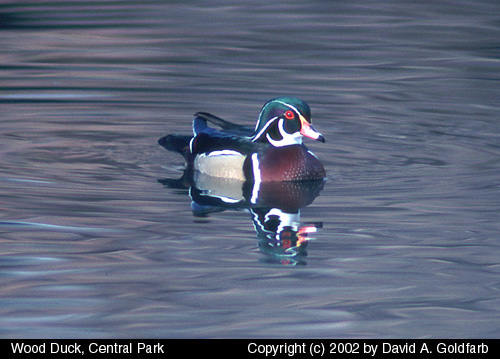There are several things I like about this photo: The colors, the water, the light reflecting. But...I fear that the darkness of the photo renders it....ugh. I'm reluctant to toss it, but I suspect that's all I can do with it. Plus there are extraneous elements ( the sun spot, branch on the upper right) but I don't think I can keep sufficient resolution if I crop more.
Too dark? Toss?
This is not a picture to keep except to print large and mark up with arrows to what's wrong. The good thing about nature is that she is always there for you.
first I don't see what you shooting conditions were. What was happening, what time of the day, how much light, what ISO, lens and speed. It's good to have these otherwise I have no idea what to suggest as it's too dark. I would imagine that the bird is not sharply in focus or else not sharpened. I hate to speculate but with a troubled image it's necessary to give the data so one know if one can be of any constructive help.
The Good: This location has interesting features: white snow by the edge of a water mass with a powerful vertical block of shadow and an enchanting foreground of silver reflections horizontally across the lower field. The one duck can be potentially just a small focus point around which the different textures play.
However, the picture is shot with the wrong lens! It is too long to grab what is needed to bring out a unified composition.
These are the problems:
1. Dark image so there's no detail on the duck!

2. Chromatic abberation: The RGB light paths are out of synch so the edges of objects show color fringing. What lens is this!! No big problem! If there were no other serious issues, Adobe RAW and Photoshop can correct this.
3. Flare: The light can be prevented by having a better coated lens but more important by having a good deep lens hood and also avoiding shooting into the sun with that lens.
4. Composition:
- Very untidy.
- The snow is just outside the field of interest and only a slither is in the frame. So no, instead of being a great feature of a composition it's distracting.
- The out of focus (? green) branches on the right need to be removed in PS!
- The great feature of the strong vertical bar of shadow in the rippling water, needs greater width in the image on the right, ie more real estate of the lake/river to have counterbalance.
- The bird is not lit well enough to be the main feature of interest.
- The foreground lit water is not well used compositionally, but like the snow above, just seems part of an untidy mess.
1. Get an even longer lens and use a flash with a
Better Beamer to illuminate the duck but not over expose the water.
2. Not worry about the bird so much, still use some flash but use a wide angle lens to get the whole vista and take advantage of the snow, dark shadows and silver reflections
That is my punishing view as of now, without wine!
Later tonight I might see fish jumping, a couple in a canoe, water lilies and I'll be saying how wonderful it is.
Asher










